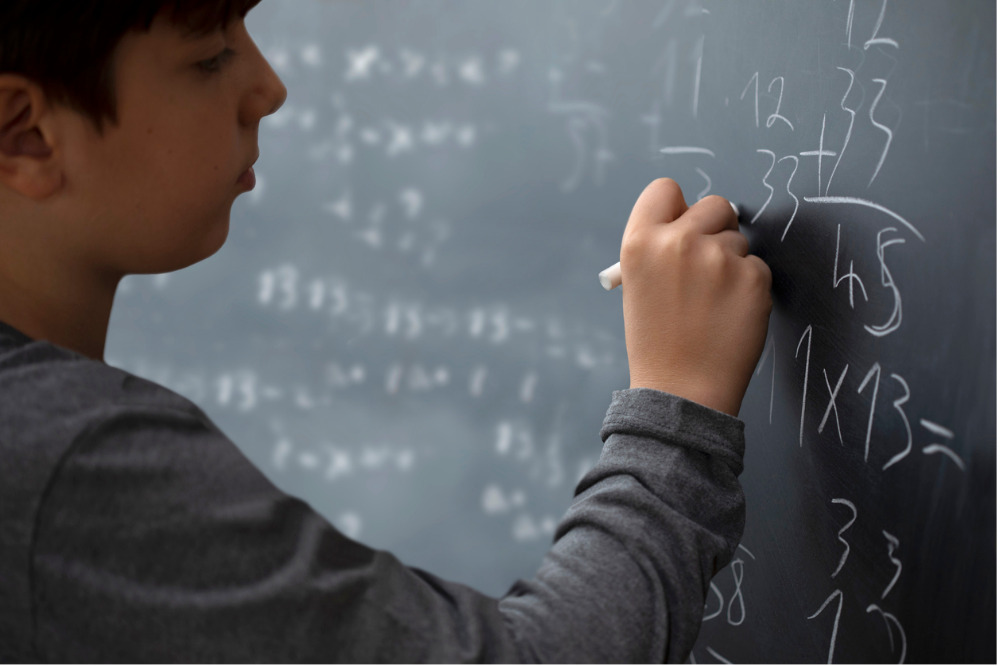
Maths teachers who invest in getting to know their students, promote collaboration in the classroom, and actively seek feedback on their students’ learning experience are more effective in improving academic outcomes, a new study has found.
The survey of 2,500 maths students and teachers by the Australian Association of Mathematics Teachers (AAMT) found that this approach from maths teachers results in a better level of student engagement in the subject, which has seen declining uptake in recent years.
It all starts with relationships
“Our research revealed that higher student ratings of maths teachers’ effectiveness were correlated strongly with a teachers’ relational orientation,” Former teacher and Co-Founder of research house Pivot, Cleo Westhorpe told The Educator.
“We strongly believe that teachers should prioritise building strong relationships with their students as a foundation for learning.”
Westhorpe noted that every educator will bring their own nuanced approach, and in her own work as a learning interventionist teacher she would support incorporating some key theoretical approaches into classroom practice.
“First of all, Carl Rogers' humanistic theory approach, including acceptance and unconditional positive regard, reminds us that we need to really see the young people in our schools as individuals who are developing emotionally and academically at different paces,” she said.
“We must bring an approach of acceptance as young people explore their learning strengths and challenges in our classrooms. We've got to show our students that we believe they all have the capacity to learn and grow in their math knowledge and skills, and this in turn will begin to develop student self-efficacy.”
Secondly, Westhorpe said, John Bowlby's attachment theory remains relevant at all levels, from foundation through to senior students.
“This encourages us to reflect on how we, as the learning leaders in the room, continually create a secure base and safe space for students to explore and fail in their learning,” she said.
“A mathematics classroom can often feel quite overwhelming for many young people, particularly if they have missed key concepts or steps of a learning trajectory, so a secure base is essential as a learning launchpad for students who find mathematics challenging.”
Westhorpe said she is a strong supporter of Jo Boaler's work around developing mathematical mindsets, setting 'positive norms' for maths classrooms, promoting the value of open-ended questions, and providing for creativity and connections in mathematical learning experiences.
“Some or all of these approaches will go a long way towards teachers strengthening relationships in mathematics classrooms.”
Westhorpe said it is also important for teachers to actively seek regular feedback on their students’ learning experiences, pointing out that feedback is essential for learners to know about their progress towards meeting a learning goal.
“Educators are no different,” she added, noting that teachers can draw from John Hattie's model of ‘Feed Up, Feed Back and Feed Forward’.
“Establishing regular cycles of feedback where students are feeding back to teachers on learning progress, attitudes, perception and preferences are just as important as the formative and summative feedback we provide to our students,” Westhorpe said.
Westhorpe said Pivot’s work capturing student perception data in schools across Australia, New Zealand and internationally revealed 'feedback loops' operating at various levels and magnitudes.
“For example, an individual teacher might be curious about how to target specific relational practices in their own zone of proximal development, or we might be partnering with a school where they are supporting students in 'thinking like a mathematician' to solve worded problems, or supporting a larger network of schools in understanding the efficacy of instructional practices in teaching place value,” she said.
“Choosing how, where, when and why you are going to capture feedback – as well as making time and space to reflect and analyse the insights – remain the critical steps of making sure your feedback creates an action for improvement.”
Schools must work with their communities to dispel maths myths
Allan Dougan, CEO of AAMT said there are a number of metrics that can help address the issue of declining participation in maths before senior years.
“These include the obvious issues like analysing and understanding NAPLAN results carefully so as to inform improvement agendas,” Dougan told The Educator. “However, there are a number of other metrics that will have an impact also.”
Dougan said these include thinking about how numeracy skills and attitudes are developed, proactively seeking ways to increase student confidence in the subject as well as supporting the development of the teacher through appropriate professional learning.
“Mathematics is perceived as a difficult subject and we have to work with our communities and parents to dispel the myths about the study of mathematics by engaging them in the work that we are doing in the area of mathematics,” he said.
“We know that females and students from lower socioeconomic backgrounds are less likely to study higher level maths. Leaders can look to proactively address this through, for example, community and industry partnerships, or mentoring opportunities.”
Reemphasising the report’s key message that relationships are a fundamental part of every school’s environment, Douga said building effective relationships builds trust and collaboration where students feel at ease sharing their thoughts, ideas and experiences.
“This in turns creates a safe environment which encourages risk-taking and exploration of new ideas and concepts,” he said.
The aim is to build a culture of learning where students curiosity is sparked and students and teacher engage in learning together exploring how to best achieve the desired outcomes for students. Teachers and school leaders need to model effective relationships and feedback models so that students can grow in their development of the processes.”


